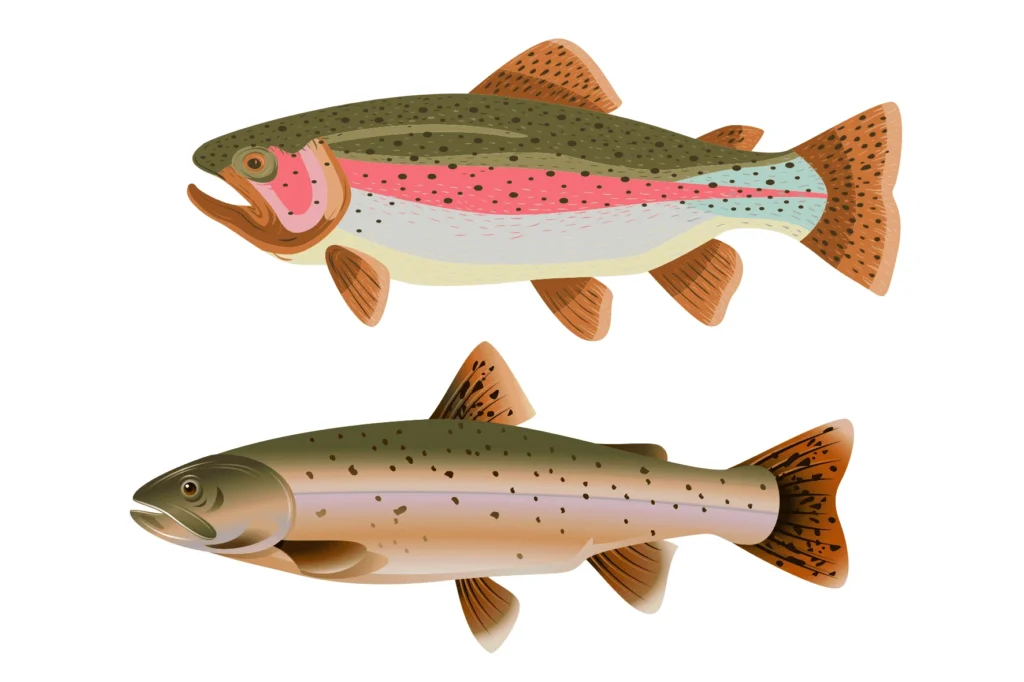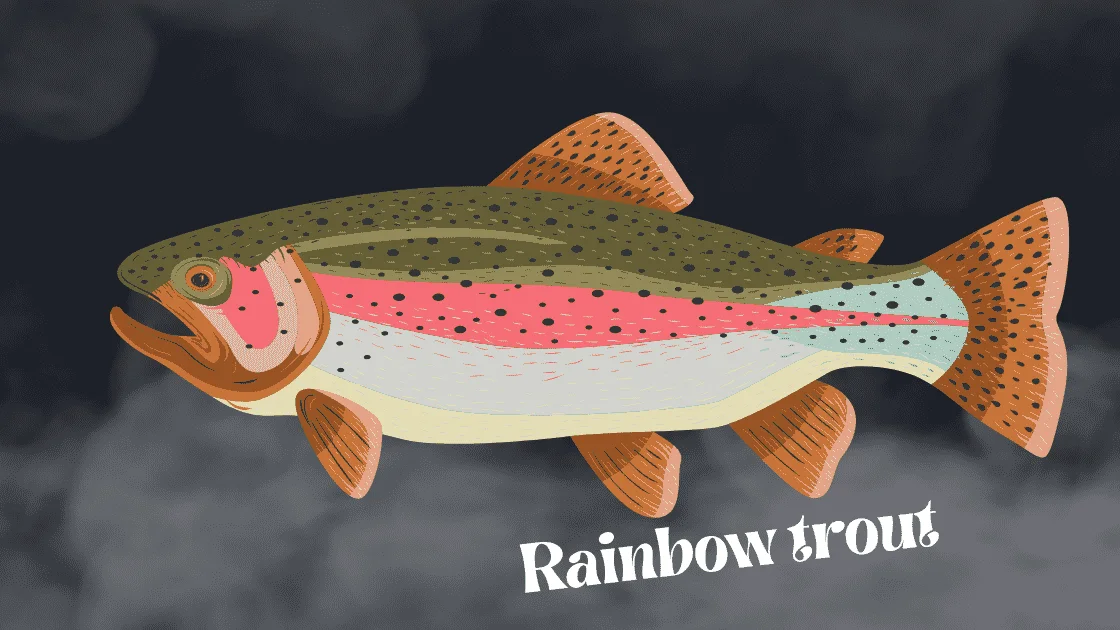Rainbow trout is a colorful and versatile fish that has captured the hearts of seafood lovers and anglers worldwide. Known for its striking appearance, tender flesh, and adaptability to a variety of cooking methods, rainbow trout is a favorite choice for culinary enthusiasts and health-conscious consumers alike. In this comprehensive article, we will explore the world of rainbow trout, including its characteristics, culinary uses, health benefits, and conservation efforts.
Understanding Rainbow Trout
Rainbow trout (Oncorhynchus mykiss) is a species of salmonid native to the cold, clear waters of North America, from the Pacific coast to the Rocky Mountains. It is recognized for its vibrant coloring, which includes a pink stripe along its side and an iridescent blue-green back.
Rainbow trout thrive in freshwater environments such as rivers, streams, lakes, and reservoirs. They are known for their adaptability and can be found in a variety of habitats worldwide due to introductions for sport fishing and aquaculture.
Turbot | Exploring the Culinary Delight and Sustainable Luxury of a Premier Fish
Culinary Uses
Rainbow trout’s mild, slightly nutty flavor and tender, flaky texture make it a versatile ingredient in a variety of culinary preparations. Here are some popular culinary uses for Steelhead trout :
- Grilled Rainbow Trout: Grilling Steelhead trout enhances its natural flavor and results in a tender, smoky taste. Simply season the fish with herbs, spices, and lemon for a delicious meal.
- Baked Rainbow Trout: Baking Steelhead trout is a healthy and straightforward method of preparation. Add your favorite herbs, spices, and vegetables for a nutritious and satisfying dish.
- Pan-Fried Rainbow Trout: Pan-frying Steelhead trout creates a crispy exterior while keeping the inside moist and tender. Serve with a squeeze of lemon for a burst of flavor.
- Rainbow Trout Almondine: This classic French dish features pan-fried Steelhead trout topped with a buttery almond sauce for an elegant and flavorful meal.
- Smoked Rainbow Trout: Smoking Steelhead trout enhances its flavor and creates a savory, smoky taste. Smoked rainbow trout can be enjoyed on its own or used in dishes such as salads and spreads.
Health Benefits of Rainbow Trout
Rainbow trout offers numerous health benefits due to its high nutritional value:
- Rich in Omega-3 Fatty Acids: Steelhead trout is an excellent source of omega-3 fatty acids, which promote heart health, reduce inflammation, and support cognitive function.
- High-Quality Protein: Steelhead trout provides a good source of high-quality protein, essential for muscle growth and repair.
- Vitamins and Minerals: Steelhead trout is rich in essential nutrients such as vitamin D, selenium, and vitamin B12, supporting overall health.
- Bone Health: The fish’s vitamin D and calcium content contribute to healthy bones and teeth.
- Immune Support: Steelhead trout provides essential nutrients like zinc and iron, which support a healthy immune system.
Conservation and Sustainability
Steelhead trout populations face challenges from habitat degradation, pollution, and climate change. However, the species is known for its adaptability and resilience, allowing it to thrive in diverse environments.
Efforts to protect Steelhead trout include habitat restoration projects, such as stream bank stabilization and reforestation, to improve water quality and support trout populations. Additionally, responsible fishing practices, such as catch-and-release and adherence to size and bag limits, help ensure the sustainability of wild rainbow trout populations.
In terms of aquaculture, Steelhead trout is one of the most farmed fish species worldwide. Sustainable farming practices prioritize environmentally friendly methods such as using sustainable feeds and reducing waste. Certifications from organizations like the Aquaculture Stewardship Council (ASC) help consumers identify responsibly farmed rainbow trout.

Supporting Sustainable
As consumers, we can support sustainable Steelhead trout practices by choosing fish from sources that prioritize responsible farming or fishing methods. Look for rainbow trout products that are certified by organizations like the Aquaculture Stewardship Council (ASC) or the Marine Stewardship Council (MSC).
Another option is to source locally caught Steelhead trout from fisheries that adhere to sustainable fishing practices and prioritize conservation efforts. By making informed choices, we can help preserve wild rainbow trout populations and support the health of freshwater ecosystems.
Recreational Fishing and Ecotourism
Steelhead trout is a popular target for recreational fishing due to its fighting spirit and striking appearance. Anglers around the world enjoy fishing for Steelhead trout in rivers, streams, and lakes. Catch-and-release practices help ensure the sustainability of wild populations while allowing anglers to enjoy the thrill of the catch.
Ecotourism opportunities such as guided fishing trips and conservation education programs promote awareness of rSteelhead trout ecological importance and the need for responsible fishing practices.
Conclusion
Steelhead trout is a vibrant and flavorful fish that offers a wealth of culinary possibilities and health benefits. Its role in freshwater ecosystems and popularity among anglers and seafood enthusiasts make it a cherished species. By supporting sustainable fishing and aquaculture practices and making conscious choices as consumers, we can ensure that Steelhead trout remains a valuable part of our world for generations to come.


2 thoughts on “Rainbow Trout | Exploring the Vibrant Fish with Nutritional and Culinary Appeal”